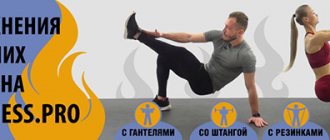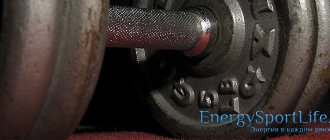How nicotine affects the body
Nicotine works as a stimulant: it enhances the release of norepinephrine and inhibits its reuptake.
Due to this, the sympathetic nervous system is activated - the resting heart rate increases and blood pressure rises. Nicotine also improves cognitive functions Cognitive Effects of Nicotine: Recent Progress: concentration, attention and working memory, promotes increased release of dopamine PHARMACOGENETICS OF NICOTINE ADDICTION: ROLE OF DOPAMINE - a neurotransmitter that provides pleasant sensations.
All this contributes to the emergence of addiction.
You can get nicotine not only through smoking tobacco, but also by placing it on the mucous membrane (snus, snuff), as well as through nicotine replacement therapy - in the form of tablets, chewing gum, patches, sprays.
Such forms are more often The acute effect of nicotine intake on anaerobic exercise performance used by athletes to obtain, in their opinion, some positive effects. But since most people get nicotine more often from cigarettes, we'll start with smoking.
How to choose the right type of activity
The fact that tobacco addiction has a double burden should not preclude physical activity. Ideally, completely quitting smoking and cleansing the body is the best option. If a person still cannot “get started”, it is necessary to choose the right type of training.
Calm activities are allowed; you can choose yoga or Pilates. Yoga is very useful for smokers, as it protects against chronic cough, promotes normal ventilation of the lungs, and cleanses the bronchi. There are several basic rules that a smoker must adhere to:
- an hour before visiting the gym, you should not smoke so that the load is less noticeable and you do not suffer from shortness of breath at the very beginning;
- if chest pain and nausea appear, you must stop exercising;
- It is recommended to drink more water, since tobacco-dependent people absorb liquid less well;
- You can’t smoke after training; you need to wait more than an hour for the body to recover.
How does smoking affect overall endurance?
Since smoking increases resting heart rate, cardiac contractility, and cardiac output (the amount of blood pumped from the heart per minute), it would seem to aid aerobic performance. After all, the more blood the heart pumps, the more oxygen will be delivered to the muscles. But in reality there is no advantage.
After smoking, the amount of carbon monoxide (CO), or carbon monoxide, increases in the blood. It binds to hemoglobin and prevents it from carrying oxygen.
In smokers, the body is supplied with oxygen less efficiently, which affects athletic performance.
This is especially important for sports in which the main work falls on the leg muscles: running, cycling, skiing, skating. In one study, Immediate Effects of Smoking on Cardiorespiratory Responses During Dynamic Exercise: Arm Vs. Leg Ergometry scientists compared how smoking affects endurance during arm and leg work. It turned out that if people smoked before pedaling with their feet, they got tired much faster than non-smokers, but there was no big difference when working with their hands.
The fact is that there are many more slow-twitch muscle fibers in the legs, which require oxygen to function. Therefore, the lack of oxygen after smoking greatly reduces your capabilities: you get tired faster. Smoking‑induced elevations in blood carboxyhaemoglobin levels. Effect on maximum oxygen uptake. and you can do less.
Smoking in bodybuilding
Smoking and bodybuilding are incompatible. Nicotine intake interferes with the growth and development of muscle mass, which is the main goal of bodybuilders.
The effect of nicotine on a bodybuilder's muscles
To grow muscle mass, not only regular training is important, but also the proper functioning of the body. The intake of even a minimal amount of nicotine disrupts its functioning:
- The increase in muscle volume depends on the amount of oxygen involved in metabolism. Smokers have a reduced oxygen supply, causing muscle fibers to grow less quickly.
- Smoking reduces the endurance of SSD, which makes long-term training impossible, which also negatively affects the result.
- Due to the narrowing of the lumen of the capillaries, the process of supply of micronutrients and vitamins to the muscles is disrupted.
If a person works out and smokes, the results from regular training are unlikely to satisfy him. To acquire sculpted muscles, you must categorically avoid smoking.
Smoking hookah
The opinion that hookah is less harmful to health compared to traditional cigarettes is erroneous. Studies have shown that hookah produces 50 times more smoke than regular cigarettes and emits significantly more nicotine, tar and carbon monoxide.
Smoking hookah
In addition, in the production of hookah tobacco, various synthetic substances, carcinogens and flavorings are used, which have a toxic effect on the body.
Most people smoke hookah for 30-40 minutes. During this time, at least 50-70 puffs are taken. In this case, a person enters the body much more smoke than when smoking 1 cigarette. From this we can conclude that smoking a hookah and playing sports is hardly a good idea. This combination should be avoided, as it can cause irreversible and dangerous changes in the body.
E-Sigs
It has been proven that the use of this gadget causes the same damage to the lungs and cardiovascular system as regular cigarettes. The only advantage of electronic cigarettes is that when they are used, fewer toxins and carcinogens accumulate in the body.
If a person plays sports and wants to achieve real results, smoking electronic cigarettes is not recommended, since although they are in a weaker form, they still increase the load on the lungs and myocardium.
How smoking affects strength training
The effect on strength training is not as pronounced as in the case of endurance sports. Smokers even have a slightly increased ability to voluntarily tense their muscles. Although this ultimately does not affect the ability to produce force.
Scientists have not found Skeletal muscle properties and fatigue resistance in relation to smoking history, differences in maximum strength, amount of Skeletal muscle morphology, metabolism and function in smokers and non-smokers. A study on smoking‑discordant monozygous twins. muscle mass, its ability to contract, muscle capillary volume and short-term muscle endurance in smokers and non-smokers.
The differences come when strength endurance—the ability to produce force over time—comes into play. Here smokers lose to non-smokers: their muscles tire faster.
Scientists suggest that this effect is explained by a decrease in the activity of cytochrome oxidase, an enzyme that is involved in the creation of energy in cell mitochondria. This is confirmed by the study Skeletal muscle morphology, metabolism and function in smokers and non-smokers. A study on smoking‑discordant monozygous twins. , conducted with the participation of twins: with the same genetic profile, amount of muscle mass and strength, siblings who smoked had muscles fatigue faster than those who did not smoke.
Thus, if you do a set with a high weight and a small number of repetitions, smoking will not provide a negative effect, but if you work for high repetitions, you will do less than if you did not smoke.
The effect does not depend on gender, number of cigarettes per day or length of smoking. If you smoke, your muscles will tire faster.
But there is good news: cytochrome oxidase activity comes Effect of smoking cessation on mitochondrial respiratory chain function. returns to normal within 7–28 days after quitting cigarettes.
Choosing the Right Activities
The fact that smoking and sports put a double burden on the body does not mean that physical activity should be completely avoided. Ideally, a complete cessation of smoking and cleansing the body of toxins are required - then it will be possible to engage in any sport. If it is still difficult to abstain from cigarettes, you need to choose the right sport. Complete physical inactivity will be even more dangerous, as it will lead to greater complications.
When smoking, you should refrain from aerobic exercise, which puts maximum stress on the heart. Don't run or jump a lot. Strength loads aimed at increasing muscle mass are also not recommended - a person who smokes and engages in bodybuilding runs the risk of injury and pathology.
When smoking, quiet sports are allowed. You can swim. Pilates and yoga classes are allowed. The latter practice is even useful for smokers, as it promotes lung ventilation, protects smokers from chronic cough, and helps cleanse the bronchi. Physical exercises should be done according to the rules:
- Do not smoke 60-80 minutes before training so that your body can cope with the stress more easily and not suffer from shortness of breath from the first exercises.
- After training, you should also wait at least an hour to allow the body to recover from sports.
- If shortness of breath, pain in the chest, head, or nausea begin, then you should immediately stop playing sports.
- Before and after training, you need to drink more water - smokers absorb liquid less well, so they need to replenish their water supply more.
You should drink more water before and after workouts.
How other forms of nicotine affect performance in sports
Many athletes, especially in team sports - hockey, American football, baseball - take nicotine in non-smoking forms, hoping for an ergogenic effect. However, in the meta-analysis Nicotine: Sporting Friend or Foe? A Review of Athlete Use, Performance Consequences and Other Considerations, dedicated to the effects of nicotine on athletic performance, did not confirm its benefits.
Of the 16 studies, only two showed improvements in performance: one noted a 17% increase in endurance, the other a 6% increase in peak torque. In other studies, scientists did not find any effect.
Let us remember that the studies involved people without addiction, and even nicotine did not have much effect on them.
If you are used to receiving this stimulant, you should not expect any effect at all.
Maybe that's why the use of nicotine is not prohibited Nicotine: Sporting Friend or Foe? A Review of Athlete Use, Performance Consequences and Other Considerations by the World Anti-Doping Agency. What's the point of banning it if it's of no use anyway?
How sports help you quit smoking
Australian scientists conducted an experiment in which it was found that about 80% of smokers who exercised daily had an easier time quitting tobacco. Moderate exercise normalizes heart rate and blood pressure. More oxygen enters the lungs and heart, spreading throughout the organs and tissues. The first changes appear after a couple of days, shortness of breath goes away, pain in the head, insomnia, irritation, and weakness in the limbs disappear.
Oxygen helps remove toxins and other dangerous substances accumulated over the years. After some time, breathing is restored, the lungs get rid of tar. To speed up the process, regular cardio exercises are necessary - aerobics, outdoor games, etc. If you engage in professional sports, thoughts about smoking will disappear. In addition, training will help you reduce excess weight; intense exercise triggers metabolic processes, maintaining a toned figure.
Doctors from America recommend regularly walking in the fresh air at a fast pace. You can start such walks the day after your last cigarette. It's better to skip the elevator and take the stairs. As soon as the pulse normalizes and shortness of breath disappears, it is useful to attend dancing or fitness. If your body is not ready for such stress, you can sign up for yoga. Practice helps keep muscles toned and actively restores the functioning of the musculoskeletal system and cardiovascular system.
Is it possible to smoke and play sports?
If you can quit, quit. This will be good for your productivity and overall health. But if you can’t do it yet, play sports.
Physical activity reduces Physical activity trajectories and mortality: population based cohort study the risk of deadly diseases increased due to smoking: cancer, cardiovascular diseases, stroke.
Even though exercise of any kind doesn't help. Can exercise help people quit smoking? quit smoking, at least you will reduce your risks a little.
Restoring the body while quitting cigarettes
If a person is thinking about how to quit smoking, should he exercise during recovery? Yes, sports are useful during the period of quitting smoking. But only light gymnastics, walking, and yoga are allowed. What are they needed for? They help you quit smoking by:
- They help take your mind off cigarettes.
- Activate metabolic processes and help remove harmful substances.
- Helps avoid weight gain, which is often observed in those who quit smoking in the first months.
If no deterioration is noticeable
If there is no noticeable harm, is it possible to smoke before or after training? Even if a smoker does not yet experience symptoms such as shortness of breath, chest pain, dizziness, or deterioration in stamina, this does not mean that dangerous changes are not occurring in the body.
How long will it take before smoking-related pathologies develop? It's different for everyone. Factors such as age, the number of cigarettes smoked daily, genetics, lifestyle, and physiology play a major role.
A person himself may be strong and athletic, but his pathologies will manifest later than in an initially weaker man or woman. But someday, disorders of the cardiovascular, respiratory or nervous system will still make themselves felt.
Additional danger
Is there a negative effect of smoking on exercise? There is definitely such an influence! Your health deteriorates during training – this can be observed without medical examination. Athletes who smoke notice that during training the consequences of addiction to tobacco appear: shortness of breath, nausea, dizziness, tinnitus, and “stars” in the eyes quickly appear. Endurance also drops significantly.
Why, if you run, jump, or do strength exercises, do all of the above reactions occur? Here are the main reasons:
- Smoking affects the respiratory system. And the result obtained depends on the work of the lungs and bronchi during sports. Increased breathing, greater ventilation of the lungs, intensive absorption of oxygen, and its transmission through the blood to all organs are required. Organs weakened by smoking cannot cope with the load, shortness of breath and cough occur.
- Nicotine causes blood vessels to constrict, forcing the heart to beat faster. Playing sports also increases the load on blood vessels and the heart muscle. Thus, physical exercise in combination with smoking puts an excessive load on the circulatory system, increases the risk of attacks and the development of heart pathologies.
- When you smoke, your muscles suffer greatly. They get less oxygen, vitamins, proteins - their endurance, growth, and ability to recover from aerobic and strength-type exercise depend on these microelements. A lack of elements significantly increases the risk of sprains during sports activities and interferes with full and rapid regeneration.
- The negative effect of nicotine and other toxic substances from cigarettes on the nervous system has also been proven. Excessive smoking provokes insomnia, decreased concentration and alertness, poor coordination, and dizziness. Symptoms will worsen with too much vigorous exercise.
Smoking-related diseases
The consequences of long-term smoking can be very diverse. They catch up with some earlier, while others are given more time to stay healthy. The most common diseases of smokers and athletes in particular include:
- oncological diseases (a large number of free radicals can directly cause cancer; the larynx, oral cavity, and lungs most often suffer from cigarette smoke);
- cardiovascular diseases (tachycardia, hypertension, angina, coronary heart disease, heart attack, thrombosis, in advanced cases of gangrene);
- diseases of the musculoskeletal system (osteoporosis, brusitis, tendonitis, artiritis, back pain, increased susceptibility to injury - femurs and shoulder girdle are especially susceptible to fractures)
- COPD (chronic obstructive pulmonary disease) - includes chronic bronchitis and emphysema;
- Impotence and infertility are also common consequences for those who like to “tar.”
A healthy lifestyle is a great alternative to bad habits. As a rule, people who begin to actively and seriously train begin to feel the harmful effects of tobacco smoke on the body more acutely and they themselves give up cigarettes.
Recovery
It is known that muscles grow during rest, not training. But what kind of rest can we talk about if at this time the body must “give up” most of its available resources to eliminate the negative impact of a smoked cigarette.
I think that the above arguments speak for themselves. Conclusion: if you want to get the full benefit from your training and see results, it is better to quit the habit of smoking, as well as the attempt to “combine” alcohol and fitness. And if for some reason you cannot or do not want to do this, then be prepared for the fact that the effectiveness of your classes drops significantly.
Did you like the article? Say “thank you” to the author and share it on social networks by clicking on the corresponding icon in the lower right corner.
And to receive more useful information every day, subscribe to our Instagram.
Types of physical activity and nicotine
Running causes increased stress on the respiratory system and heart. And when someone involved in this sport has a bad habit in the form of smoking, then this load increases even more. At the same time, a heavy smoker’s heart rate is already increased by 30%. This fact explains rapid fatigue when playing sports.
Running and smoking is not the best combination and has the potential to have a detrimental effect on lung function. Harmful components of cigarette smoke deposited on the walls of the lungs lead to disruption of oxygen circulation. Therefore, while jogging, a person experiences shortness of breath and discomfort in the heart area. Therefore, long distances are insurmountable for a smoker.
Moreover, a person risks his health, since the work of the heart muscle is at the limit of its capabilities. The negative impact of cigarettes on the nervous system cannot be ruled out. Nicotine disrupts coordination of movements, and as a result of smoking, a person’s reaction speed changes. Cardio exercise changes breathing, making it deep and rich by increasing lung capacity. Internal organs and tissues are supplied with oxygen.
When nicotine enters the lungs, which are in a state of tone, it begins to quickly bind to blood cells and spread throughout the body. In this state, the harmful effects of cigarettes appear much faster. As a result, the practical benefits of playing sports are reduced to zero. That is why it is extremely undesirable to smoke after another workout.
This especially applies to sports such as:
- aerobics;
- swimming;
- run;
- Athletics;
- cycling;
- fitness training.
Athletes who build muscle mass also suffer from smoking. Nicotine blocks the flow of oxygen into the blood. This, in turn, disrupts the production of protein, which is necessary for muscle growth. Cell renewal in a smoker occurs more slowly, and vitamins are absorbed less well. A bodybuilder who smokes will gain muscle mass at a slightly slower rate than a non-smoker.
For the effectiveness of sports training, it is advisable to quit smoking
What about one cigarette?
For comparison, we can give a simple example. If you take just one injection of testosterone and do not use PCT, then you are likely to experience all the side effects, from acne to manifestations of gynecomastia.
The situation is similar with cigarettes. Even if you smoke one cigarette a week, you are destroying your body, harming it:
- The synthesis and absorption of vitamin B6 is disrupted for almost 7 days.
- All good cholesterol in the blood is converted into harmful cholesterol, immediately sticking to the walls of blood vessels.
- You produce dopamine stimulation, which leads to disruption of neuromuscular connections and a decrease in strength.
- You are irreversibly destroying your lungs.
Therefore, even one cigarette causes significant harm and can provoke a strength plateau.











